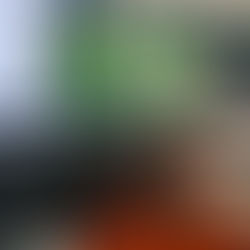Never fly LiDAR after a hard rain
- Hunter Bankston
- Oct 8, 2024
- 3 min read
Aerial LiDAR (Light Detection and Ranging) is a powerful tool for capturing precise topographic data. However, one of its limitations is its inability to penetrate standing water, a common issue that must be considered when planning a survey. Understanding why LiDAR struggles in these conditions and when to avoid data collection can save both time and resources.
The Science Behind Aerial LiDAR and Water
LiDAR works by emitting laser pulses toward the ground and measuring the time it takes for them to return after bouncing off surfaces. These pulses typically interact well with solid objects like vegetation, buildings, and bare earth. However, when the laser hits water, the light is either absorbed, scattered, or reflected away in unpredictable directions. This results in very few, if any, returns from areas with standing water.
Water acts as a mirror, scattering the laser beams, which means that rather than bouncing back to the sensor, the beams get reflected at different angles. Additionally, water absorbs certain wavelengths of the laser light used in LiDAR systems, further diminishing the chance of capturing accurate data.
Why Data Collection After Rain Is a Bad Idea
After heavy rainfall, the presence of standing water becomes a major obstacle for LiDAR. Water-filled depressions, puddles, and other wet areas won't provide the necessary returns, leaving data gaps in your survey. This is particularly problematic when precise terrain modeling is needed, as the water could obscure features such as ditches, low-lying areas, or small variations in ground level that are critical to accurate mapping.
Moreover, standing water also results in fewer ground returns. This makes it impossible to determine the exact elevation of the terrain beneath the water, leading to inaccurate Digital Elevation Models (DEMs). The end result? Misleading or incomplete data that could jeopardize your project.
Wet Grass and High Vegetation: Another Challenge
Wet vegetation, particularly tall, dense grass, presents its own set of complications for LiDAR. When grass is wet, the laser pulse can get absorbed or scattered by the water droplets clinging to the blades. As a result, fewer returns are recorded, and much of the laser energy is lost. In such cases, it becomes difficult for the LiDAR system to accurately penetrate through the vegetation to reach the ground.
In high vegetation, the issue is even more pronounced. Tall, wet grass can create a thick barrier that prevents the laser from reaching the ground altogether. This can lead to an overestimation of elevation, where the highest points of the grass are mistakenly interpreted as the ground level.
When to Avoid LiDAR Surveys
It’s important to avoid scheduling LiDAR flights under the following conditions:
After heavy rain or during periods of standing water: Ensure the ground is dry to avoid gaps in the data caused by water.
In areas with tall, wet vegetation: Wet high grass and dense vegetation can reduce the number of accurate ground returns, resulting in misleading data.
For the best results, LiDAR surveys should be conducted in dry conditions, with little to no standing water and when vegetation is not wet from rain or dew.
Conclusion
Although LiDAR is a robust technology for mapping and surveying, its limitations become apparent in wet conditions. Standing water and wet vegetation, particularly high grass, disrupt the laser’s ability to return accurate data, leading to gaps or errors in the final survey. By understanding when not to conduct a LiDAR survey, you can avoid unnecessary complications and ensure that your data is as precise as possible. Always check weather conditions and the state of the terrain before initiating a survey to make the most of your LiDAR investment.
#AerialLiDAR #LiDARMapping #SurveyingChallenges #DataAccuracy #StandingWaterIssues #WetVegetation #LiDARTechnology #TerrainMapping #RemoteSensing #GeospatialData
















































































Comments